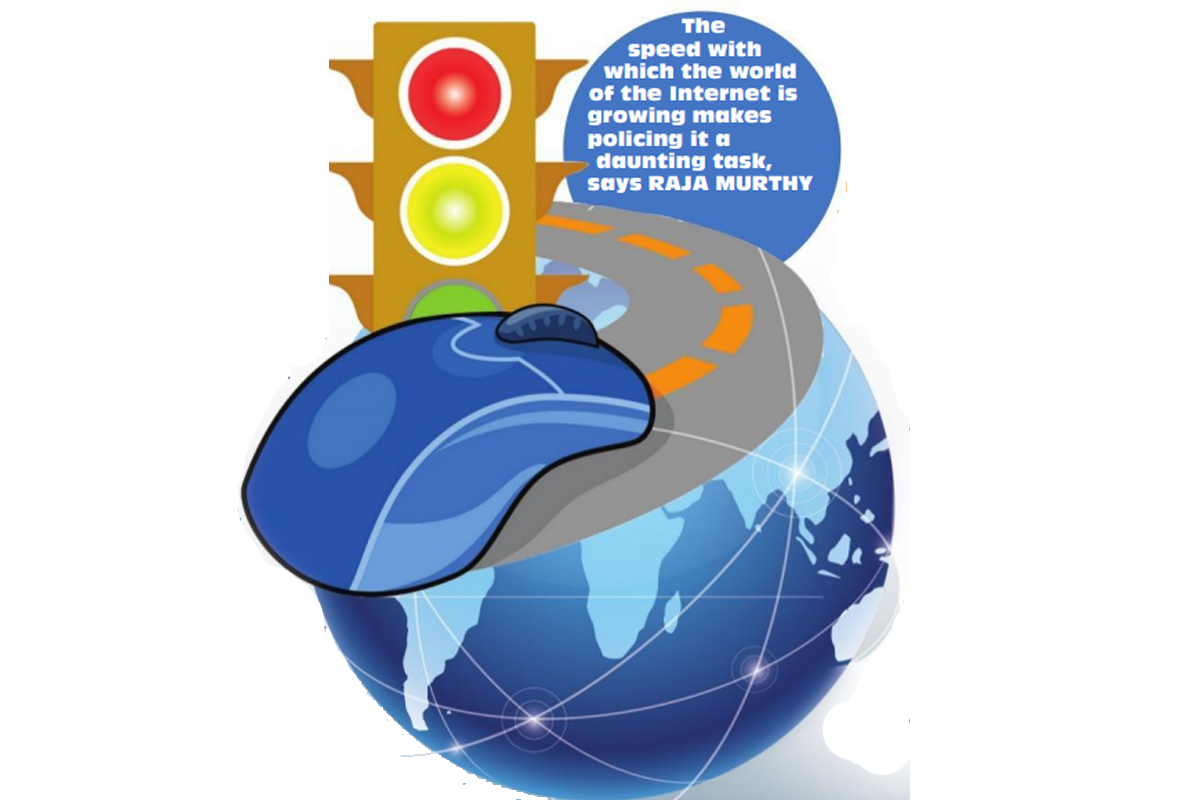A two-day seminar in Mumbai (October 10-11) bravely ventured into regulatory puzzles of a frenziedly growing Internet world – 2.41 billion Facebook users,
one billion on Instagram (71 per cent under age 35), 1.94 billion websites, 330 million using Twitter.
Advertisement
As we live more of our life online, regulating this mind-boggling information traffic becomes necessary, if the World Wide Web is not to explode into anarchy of a Wild World Web.
The Ministry of Information and Broadcasting, collaborating with the Film Certification Appellate Tribunal, organized the two-day seminar ‘Film Certification and Regulation of Online Content’ at the peaceful Films Division Complex in Peddar Road.
Discussions only scratched the surface, but delegates could hardly be blamed in a herculean task similar to a few hands regulating a dozen torrential rivers of online content. Not easy, with content quantity.
More video material gets uploaded in 30 days than major television networks in the US have created in 30 years. Not humanly possible to monitor such content volumes, and yet not logically possible to allow anyone the absolute freedom to upload anything they want.
Former Chief Justice Manmohan Sarin was among dignitaries the Film Certification Appellate Tribunal recruited to answer tricky questions about regulation. Justice Sarin mentioned the Indian constitution not allowing “absolute freedom” – rightly so, because no sane society can allow unlimited freedom. I have the freedom to do and say what I want, but I cannot have absolute freedom to indulge in criminal activities, harm fellow beings.
None of the seminar speakers who debated regulating online content referred to A.G Gardiner’s epochal essay ‘On the Rule of the Road’. I learnt that essay during school days in Don Bosco, Egmore, in Chennai, a lesson worth remembering.
In ‘the Rule of the Road’, Gardiner writes on how in order to preserve the liberties of all, the liberties of everyone have to be curtailed. I have the right to walk anywhere I want, but not the right to hold up traffic walking in the middle of the road – like the lady from Petrograd in Gardiner’s essay.
Liberty is not a personal affair only, wrote Gardiner, but a social contract. That social contract needs to be remembered in dealing with tempestuous, impulsive nature of social media – a media form that in fact has become the new mainstream media.
More people are sourcing information through social media, and messaging apps like WhatsApp, WeChat (China), Line (Japan).
Can terrorist groups and criminal gangs be allowed to exploit these privacy-ensuring communication platforms? No. The challenge is ensuring the balance of security of all and privacy of the individual. So, Gardiner’s essay again enters the equation in dealing with online media: the social contract of compromising some individual freedom to ensure safety of the majority.
For instance, I couldn’t care less if the government is snooping into my private email. I don’t indulge in criminal activity, and so have nothing to hide.
So, I have no problems surrendering some online privacy if it ensures the same tracking mechanisms can track terrorist activity – and prevent another terrorist attack like the ones I have experienced in South Bombay. Don’t forget this simple rule in life about privacy: avoid doing anything to be ashamed about. And be careful about what we think, do and say, because every action – mental, vocal, and physical – has its consequences, good or bad.
We have seen such consequences in social media that often can be impulsive media. People blurt out careless thoughts online that have damaged careers and relationships. Or wage deliberate misinformation campaigns with illegal motives.
Freedom of expression does not mean freedom to defame. The two-day Films Division seminar on regulating online content – that involved the Confederation of Indian Industry – may have been a fallout of the Supreme Court on September 24 asking the central government to regulate social media content that it termed as becoming “dangerous”.
How to police the vast oceans of social media? How to even monitor YouTube? YouTube has more than a billion users, nearly one-third of the Internet population.
More than 500 million hours of YouTube videos are watched daily. Nearly 80 hours of video content are uploaded on YouTube each minute.
Yet YouTube has some form of inbuilt censorship, with options to report illegal content. The problem though is YouTube (with Google as owners) wields censorship with a political bias – on what Google bigwigs deem as “fake news” – which in reality may be only legitimate content criticizing the Democrat Party in the US to which top Google executives have been revealed as ardent supporters. In India, we have another form of content regulation: “hurting religious sentiments”, or “offending” some other sentiment – when the gods or saints about whom those “offending” remarks were made were epitome of tolerance and compassion.
In reality, one’s big ego gets “hurt”. No need to blindly react to what others say. People have a right to express opinions – whether we like or agree with those opinions.
But no one has a right to indulge in criminal or terrorist activity. This non-criminal versus criminal filter has to form the practical basis of policing online traffic – which like rapidly increasing road traffic needs some regulation.











